c
h
r
i
s
c
r
a
w
f
o
r
d
Game Mechanics
Advanced Game Design
Ernest Adams
Joris Dormans
ptg8274339�
Game Mechanics
Advanced Game Design
Ernest Adams
Joris Dormans
ptg8274339�
Game Mechanics: Advanced Game Design
Ernest Adams and Joris Dormans
New Riders Games
1249 Eighth Street
Berkeley, CA 94710
(510) 524-2178
Fax: (510) 524-2221
Find us on the Web at www.newriders.com
To report errors, please send a note to errata@peachpit.com
New Riders Games is an imprint of Peachpit, a division of Pearson Education
Copyright © 2012 Ernest Adams and Joris Dormans
Senior Editor: Karyn Johnson
Developmental Editor: Robyn Thomas
Technical Editor: Tobi Saulnier
Copy Editor: Kim Wimpsett
Production Editor: Cory Borman
Composition: WolfsonDesign
Proofreader: Bethany Stough
Indexer: Valerie Perry
Interior Design: Charlene Will, WolfsonDesign
Cover Design: Peachpit Press/Charlene Will
Notice of Rights
All rights reserved. No part of this book may be reproduced or transmitted in any form by
any means, electronic, mechanical, photocopying, recording, or otherwise, without the prior
written permission of the publisher. For information on getting permission for reprints and
excerpts, contact permissions@peachpit.com. See the next page for image credits.
Notice of Liability
The information in this book is distributed on an “As Is” basis, without warranty. While every
precaution has been taken in the preparation of the book, neither the authors nor Peachpit
shall have any liability to any person or entity with respect to any loss or damage caused or
alleged to be caused directly or indirectly by the instructions contained in this book or by the
computer software and hardware products described in it.
Trademarks
Many of the designations used by manufacturers and sellers to distinguish their products are
claimed as trademarks. Where those designations appear in this book, and Peachpit was aware
of a trademark claim, the designations appear as requested by the owner of the trademark. All
other product names and services identified throughout this book are used in editorial fashion
only and for the benefit of such companies with no intention of infringement of the trade-
mark. No such use, or the use of any trade name, is intended to convey endorsement or other
affiliation with this book.
ISBN-13: 978-0-321-82027-3
ISBN-10: 978-0-321-82027-4
9 8 7 6 5 4 3 2 1
Printed and bound in the United States of America
ptg8274339�
Respectfully dedicated to the memory of Mabel Addis Mergardt,
principal designer of The Sumerian Game (later made famous
as HAMURABI), the first game with an internal economy that
I ever played.
— Ernest W. Adams
To Marije van Dodeweerd for love.
— Joris Dormans
ptg8274339�
iv Game mechanics: advanced Game desiGn
Acknowledgments
The genesis of this book was a late-night meeting between the two of us during the
G-Ameland student game jam festival on a small island off the north coast of the
Netherlands. Joris Dormans showed the Machinations framework to Ernest Adams,
and Ernest Adams promptly said, “We should write a book about game mechanics.”
But it took nearly two years and the advice and assistance of many other people
before we were done. Now it is time to thank them.
Our deepest appreciation goes to Mary Ellen Foley and Marije van Dodeweerd, our
beloved mates, who patiently tolerated very late nights, missed holidays and week-
ends, and the occasional rant about the vagaries of the writing process. We’ll make
it up to you if we can!
Stéphane Bura suggested that Joris should create an interactive tool when he saw the
original, static version of the Machinations diagrams.
Jesper Juul made the invaluable distinction between games of emergence and games
of progression that informs the entire book.
Remko Scha had a big impact on the formal scrutiny of the Machinations frame-
work in his capacity as Joris Dormans’s PhD supervisor.
Mary Ellen Foley kindly checked and corrected all our references.
The colleagues and students at the Amsterdam University of Applied Sciences always
have been willing test subjects for much of the material that ended up in this book.
We must also thank a number of people for permission to reproduce images:
Alexandre Duret-Lutz, for his photo of The Settlers of Catan; Andrew Holmes, for
his photo of Kriegsspiel; Jason Lander, for his photo of Power Grid; Johan Bichel
Lindegaard, for his photo of Johan Sebastian Joust; Wikimedia Commons contributor
popperipopp, for his or her photo of the game Connect Four. We are also grateful
to the Giant Bomb website (www.giantbomb.com), for permission to reproduce screen
shots from their collection.
Thanks to Mika Palmu, Philippe Elsass, and all other contributors to FlashDevelop,
for creating the open source development tool that was used to program the
Machinations Tool.
We are extremely grateful to the many anonymous people who have helped to build
Inkscape, the open source Scalable Vector Graphics editor, without which it would
have been much more difficult to produce our illustrations.
ptg8274339�
v
As Elrond said, the last place is the place of honor. We thank Margot Hutchison,
Ernest Adams’s agent, for assistance with the contract. Tobi Saulnier was our wise
and sharp-eyed technical editor. Her suggestions are present but invisible through-
out the book, and we’re deeply grateful that the CEO of a game company would be
willing to take the time to help us. Robyn G. Thomas, our tireless (and seemingly
sleepless) development editor, pleaded, cajoled, threatened, and oversaw the whole
process with her usual flair and attention to detail. And finally, special thanks to
Karyn Johnson, senior editor at Peachpit Press, for having the faith in us to let us
write the book in the first place.
We hasten to add that the blame for any errors or omissions belongs entirely to us
and not to any of the foregoing.
We welcome all comments, questions, and criticism; please write to Joris Dormans
at jd@jorisdormans.nl and to Ernest W. Adams at ewadams@designersnotebook.com.
About the Authors
Ernest W. Adams is an American game design consultant and teacher residing in
England. In addition to his consulting work, he gives game design workshops and
is a popular speaker at conferences and on college campuses. Mr. Adams has worked
in the interactive entertainment industry since 1989 and founded the International
Game Developers’ Association in 1994. He was most recently employed as a lead
designer at Bullfrog Productions, and for several years before that, he was the audio/
video producer on the Madden NFL line of football games at Electronic Arts. In his
early career, he was a software engineer, and he has developed online, computer,
and console games for machines from the IBM 360 mainframe to the present day.
Mr. Adams is the author of four other books, including Fundamentals of Game Design,
the companion volume to this book. He also writes the Designer’s Notebook series
of columns on the Gamasutra game developers’ webzine. His professional website is
at www.designersnotebook.com.
Joris Dormans (PhD) is a Dutch lecturer, researcher, and gameplay engineer based
in Amsterdam, the Netherlands, working in industry and higher education since
2005. For the past four years, he has been researching formal tools and methods to
design game mechanics. His other area of research focuses on how to leverage for-
mal design methods to generate games procedurally. Dr. Dormans has presented
papers and hosted workshops on game design on many academic and industry
conferences. As an independent freelance game designer, he published and worked
on several video and board games. Among these are story-driven adventure games,
physical platform games, and a satirical political card game. He has also participated
in all Global Game Jams to date. His professional website is at www.jorisdormans.nl.
ptg8274339�
vi Game mechanics: advanced Game desiGn
About the Technical Editor
Tobi Saulnier is founder and CEO of 1st Playable Productions, a game development
studio that specializes in design and development of games tailored to specific
audiences. Games developed by 1st Playable span numerous genres to appeal to
play styles and preferences of each group and include games for young children,
girls, middle schoolers, young adults, and some that appeal to broad audiences.
The studio also creates games for education. Before joining the game industry in
2000, Tobi managed R&D in embedded and distributed systems at General Electric
Research and Development, where she also led initiatives in new product develop-
ment, software quality, business strategy, and outsourcing. She earned her BS, MS,
and PhD in Electrical Engineering from Rensselaer Polytechnic Institute.
ptg8274339�
Contents
Introduction ......................................................... xi
Who Is This Book For? . . . . . . . . . . . . . . . . . . . . . . . . . . . . . . . . . . . . . . . . . . . . . . . .xii
How Is This Book Organized? . . . . . . . . . . . . . . . . . . . . . . . . . . . . . . . . . . . . . . . . . .xii
Companion Website . . . . . . . . . . . . . . . . . . . . . . . . . . . . . . . . . . . . . . . . . . . . . . . . . xiii
ChAptEr 1
Designing Game Mechanics ...................................1
Rules Define Games . . . . . . . . . . . . . . . . . . . . . . . . . . . . . . . . . . . . . . . . . . . . . . . . . . .1
Discrete Mechanics vs. Continuous Mechanics . . . . . . . . . . . . . . . . . . . . . . . . . . . . .9
Mechanics and the Game Design Process . . . . . . . . . . . . . . . . . . . . . . . . . . . . . . . . .12
Prototyping Techniques . . . . . . . . . . . . . . . . . . . . . . . . . . . . . . . . . . . . . . . . . . . . . . . 15
Summary . . . . . . . . . . . . . . . . . . . . . . . . . . . . . . . . . . . . . . . . . . . . . . . . . . . . . . . . . . . 21
Exercises . . . . . . . . . . . . . . . . . . . . . . . . . . . . . . . . . . . . . . . . . . . . . . . . . . . . . . . . . . .22
ChAptEr 2
Emergence and progression................................ 23
The History of Emergence and Progression . . . . . . . . . . . . . . . . . . . . . . . . . . . . . . . .23
Comparing Emergence and Progression . . . . . . . . . . . . . . . . . . . . . . . . . . . . . . . . . .24
Games of Emergence . . . . . . . . . . . . . . . . . . . . . . . . . . . . . . . . . . . . . . . . . . . . . . . . .26
Games of Progression . . . . . . . . . . . . . . . . . . . . . . . . . . . . . . . . . . . . . . . . . . . . . . . . .30
Structural Differences . . . . . . . . . . . . . . . . . . . . . . . . . . . . . . . . . . . . . . . . . . . . . . . . . 37
Emergence and Progression Integration . . . . . . . . . . . . . . . . . . . . . . . . . . . . . . . . . . 39
Summary . . . . . . . . . . . . . . . . . . . . . . . . . . . . . . . . . . . . . . . . . . . . . . . . . . . . . . . . . . . 41
Exercise . . . . . . . . . . . . . . . . . . . . . . . . . . . . . . . . . . . . . . . . . . . . . . . . . . . . . . . . . . . .42
ChAptEr 3
Complex systems and the structure
of Emergence ..................................................... 43
Gameplay as an Emergent Property of Games . . . . . . . . . . . . . . . . . . . . . . . . . . . . .43
Structural Qualities of Complex Systems . . . . . . . . . . . . . . . . . . . . . . . . . . . . . . . . . 47
Harnessing Emergence in Games. . . . . . . . . . . . . . . . . . . . . . . . . . . . . . . . . . . . . . . . 57
Summary . . . . . . . . . . . . . . . . . . . . . . . . . . . . . . . . . . . . . . . . . . . . . . . . . . . . . . . . . . .58
Exercises . . . . . . . . . . . . . . . . . . . . . . . . . . . . . . . . . . . . . . . . . . . . . . . . . . . . . . . . . . .58
s
t
n
E
t
n
o
C
vii
ptg8274339�
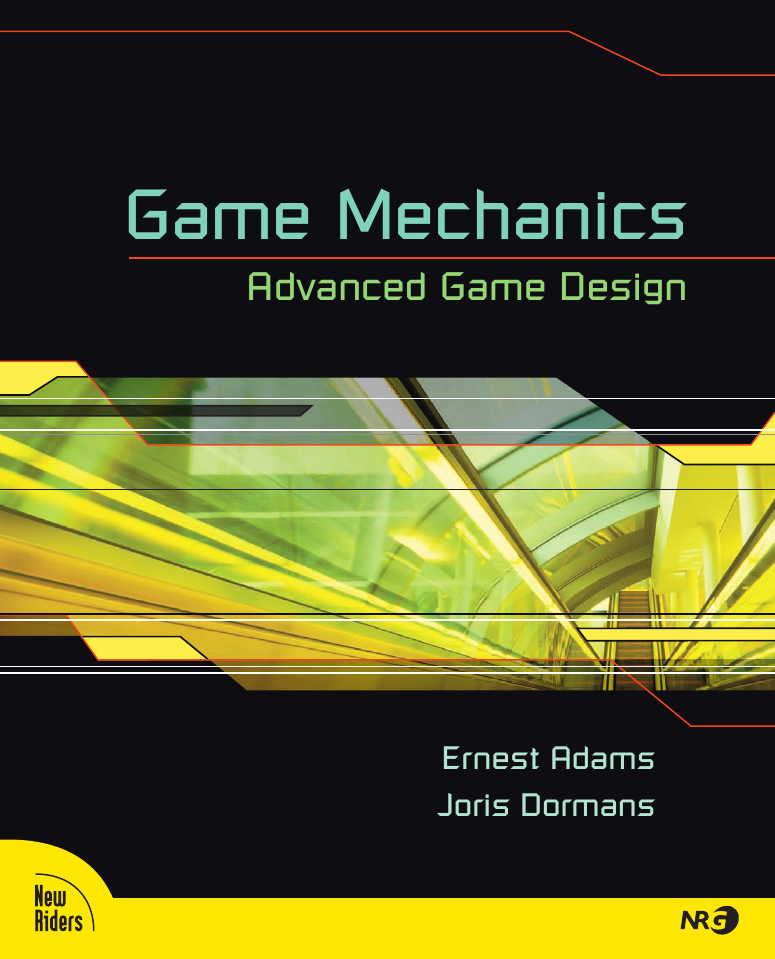



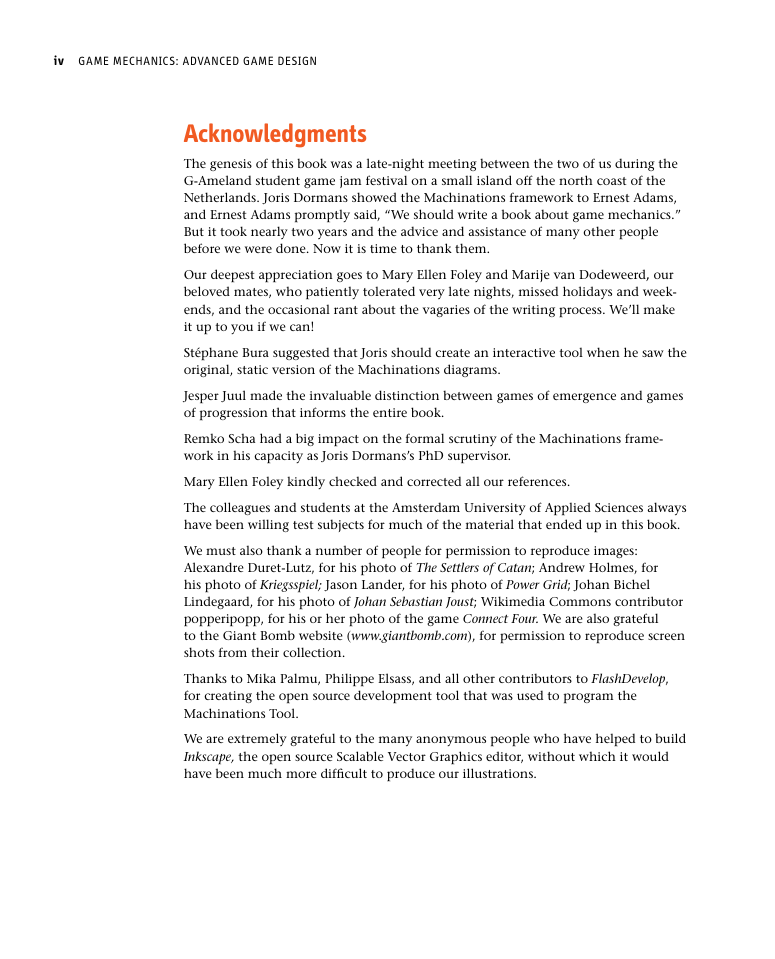
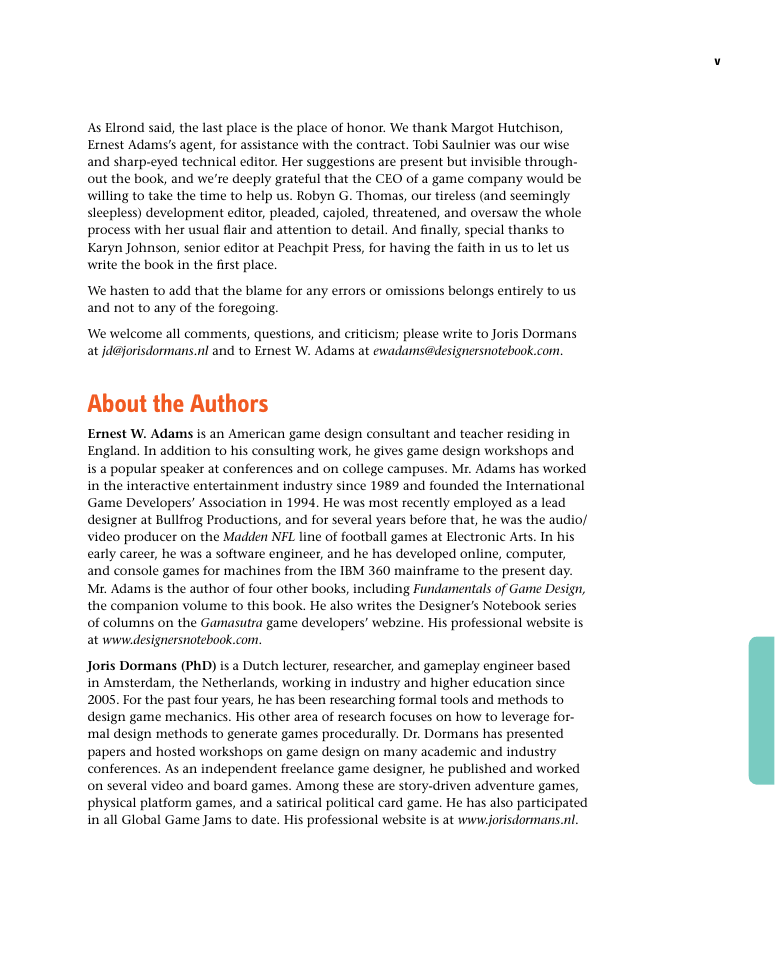
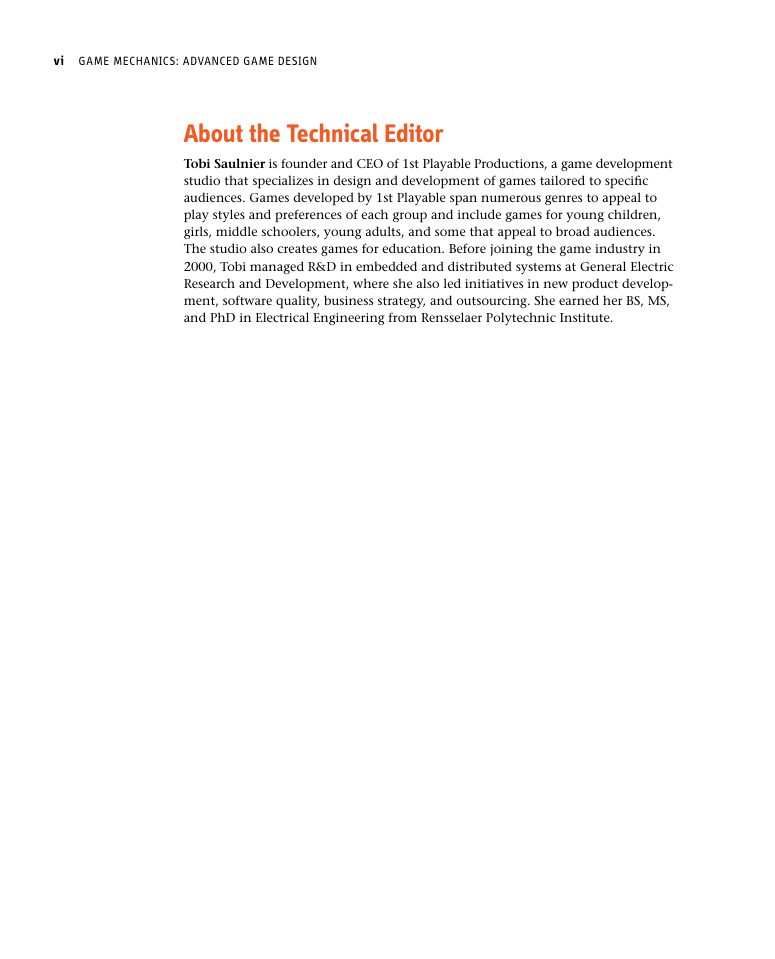
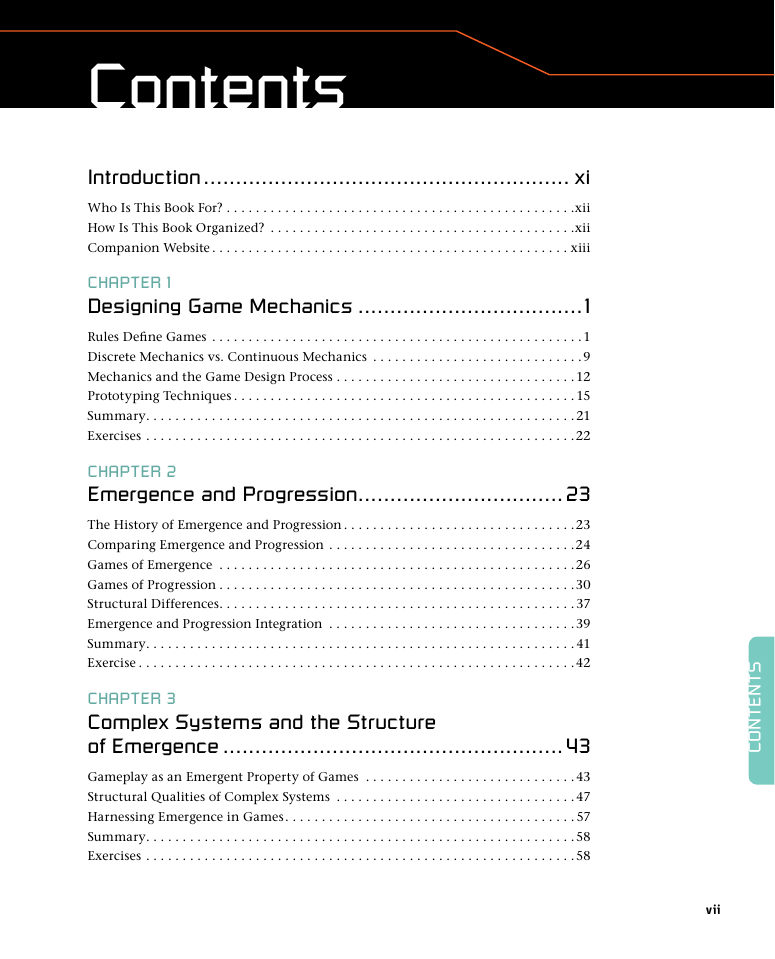








 2023年江西萍乡中考道德与法治真题及答案.doc
2023年江西萍乡中考道德与法治真题及答案.doc 2012年重庆南川中考生物真题及答案.doc
2012年重庆南川中考生物真题及答案.doc 2013年江西师范大学地理学综合及文艺理论基础考研真题.doc
2013年江西师范大学地理学综合及文艺理论基础考研真题.doc 2020年四川甘孜小升初语文真题及答案I卷.doc
2020年四川甘孜小升初语文真题及答案I卷.doc 2020年注册岩土工程师专业基础考试真题及答案.doc
2020年注册岩土工程师专业基础考试真题及答案.doc 2023-2024学年福建省厦门市九年级上学期数学月考试题及答案.doc
2023-2024学年福建省厦门市九年级上学期数学月考试题及答案.doc 2021-2022学年辽宁省沈阳市大东区九年级上学期语文期末试题及答案.doc
2021-2022学年辽宁省沈阳市大东区九年级上学期语文期末试题及答案.doc 2022-2023学年北京东城区初三第一学期物理期末试卷及答案.doc
2022-2023学年北京东城区初三第一学期物理期末试卷及答案.doc 2018上半年江西教师资格初中地理学科知识与教学能力真题及答案.doc
2018上半年江西教师资格初中地理学科知识与教学能力真题及答案.doc 2012年河北国家公务员申论考试真题及答案-省级.doc
2012年河北国家公务员申论考试真题及答案-省级.doc 2020-2021学年江苏省扬州市江都区邵樊片九年级上学期数学第一次质量检测试题及答案.doc
2020-2021学年江苏省扬州市江都区邵樊片九年级上学期数学第一次质量检测试题及答案.doc 2022下半年黑龙江教师资格证中学综合素质真题及答案.doc
2022下半年黑龙江教师资格证中学综合素质真题及答案.doc